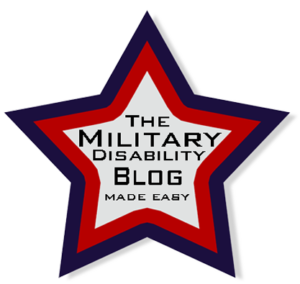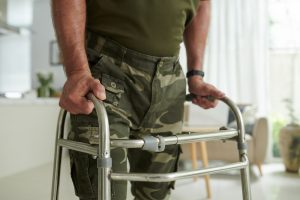Checklist to Ace Your C&P Exam
- Published:
- Last Updated: September 11, 2024
When applying for VA Disability Benefits, the Compensation and Pension Exam (C&P Exam) is an important step in the process. This medical examination, which is given by VA-approved doctors, is critical for gathering evidence necessary to support service-connection and to properly rate your disability, thus ensuring that you receive your correct benefits.
The Purpose and Importance of the C&P Exam

When submitting a VA Disability Claim, it is the veteran’s responsibility to ensure that the supporting evidence does two things:
- Proves service-connection, and
- Supports the correct ratings.
The VA must have evidence that every condition on your claim is the result of your military service. Without this evidence, the condition will be denied. Once service-connection is proven, the VA then must have sufficient evidence to properly assign a VA Disability Rating to the condition.
The C&P Exam is intended to back up the other evidence submitted with your claim and provide the most current evidence of the severity of your conditions.
During the exam, your medical history is reviewed, a physical examination is performed, and the necessary tests are administered.
The VA gives a lot of credibility to the findings of the C&P Exam, so it will directly influence the amount of compensation you ultimately receive. This is why it is vital that you are fully prepared before attending your C&P Exam.
Here is a checklist to help you prepare for—and ace!—your C&P Exam.
Your C&P Exam Checklist
Ace your C&P Exam by checking off each of these boxes before and during your exam.
Gather and organize all of your medical records and other pertinent evidence.
Know the rating criteria for each of your conditions.
Go to the exam:
-
Do NOT miss your exam!
-
Plan your schedule to arrive early
-
Wear appropriate clothes
-
Bring all evidence and notes
Be proactive during your C&P Exam:
-
Thoroughly discuss the service-connection of your condition
-
Fully and clearly communicate the severity of your conditions
-
Make sure all necessary measurements are taken
-
Make sure all necessary tests are performed
-
Don’t worry about the exam length
Let’s walk through each of these items on the checklist to ensure you understand everything you need to do.
First, gather and organize all of your medical records and other pertinent evidence.
All of these records should already have been submitted along your claim, however, it’s never a good idea to assume that the C&P Exam physician received everything from the VA for their review. Instead, take a copy of everything with you, just in case. It may not be needed, but better safe than sorry.
In order to prove service-connection, these records need to make it clear how and when the condition began and how it is related to your military service. These records must also show the progress and severity of your condition over time up to the present.
Take with you:
- All pertinent medical records, including diagnostic records, doctor’s notes, test results, incident reports, treatment histories, etc.
- Any new medical evidence and test results received after submitting your claim. This ensures the examiner has the most up-to-date information regarding your condition.
Why This Matters: Having a complete and organized collection of medical documents allows the examiner to completely understand the scope of your condition. This ensures that only correct information is recorded at your exam and can save you from having to provide additional information later, which could delay your claim.
Second, know the rating criteria for each of your conditions.
The ratings for your conditions will directly impact the amount of money you receive for your disability, so it is vital you know exactly how each of your conditions is rated so you can ensure that the proper information is submitted with your claim and recorded at your C&P Exam.
On our site, we provide a complete breakdown of the rating criteria for each condition. You can search for your condition or use the green menu on the All-Access Members’ page to find the VASRD Code and the ratings for each of your conditions.
Carefully take note of the exact data the VA needs to see in order to assign the correct rating to your condition. You can then ensure that your medical evidence contains this data and that the physician at your C&P Exam performs all the tests, measurements, and examinations needed to rate the condition.
Why This Matters: In most cases, your C&P physician will not know the rating requirements for the conditions, so it’s important that you have this knowledge available to ensure that everything is properly recorded at your exam.
Third, go to the exam.
Do NOT miss your exam! Being marked as a no-show will have a severely negative impact on your claim and benefits. If you are not able to attend, contact the VA as soon as possible beforehand to reschedule.
On the day of your exam, plan your schedule to arrive at least 15 minutes early so that you can complete any paperwork or administrative chores. This will give you time to mentally prepare and relax.
Also make sure to wear appropriate clothes. Depending on your conditions, you may or may not need to disrobe for the examination. In case the physician does not ask you to disrobe, make sure to wear comfortable clothes that allow easy access to places that may need examination and do not inhibit any motion.
Don’t forget to bring all of the evidence you’ve prepared as well as your notes on how your conditions are rated.
With all of this under your belt, you’ll be fully prepared and ready to ace your C&P Exam.
Why This Matters: Proper preparation on exam day reduces stress, guarantees that all administrative responsibilities are finished on time, and ensures that you have all the tools you need to ace the exam.
Fourth, be proactive during your C&P Exam.
How you act during your exam is important. You need to be honest, open, respectful, and proactive.
There are two things you need to watch out for during the exam:
- Physicians have tests to determine if someone is lying or exaggerating their symptoms and codes they can include in their notes to communicate this to others.
- Even though these physicians are appointed by the VA to perform C&P Exams, they are not trained on exactly how every condition is rated.
In order to avoid the VA mistrusting your testimony, it’s important that you are open and honest during your exam. Definitely do not downplay your condition, but do not overplay it either. You’ve already done the research and know exactly how your condition should be rated, so honestly and clearly report on this severity, and you’ll be good to go.
Since the examining physicians do not know how your conditions are rated, it’s important that you don’t just sit back and go with the flow. The physicians are given in-depth questionnaires to complete—and these should hit all the points needed to rate your condition—but just to make sure, keep your notes close and make sure that everything needed to rate your condition is recorded. This way, if the exam is wrapping up and a few of your items haven’t been checked, you’ll be ready and able to respectfully discuss them with the physician and get them resolved.
Ultimately, here are a few pointers to help you be proactive during your C&P Exam:
- thoroughly discuss the service-connection of your condition
- fully and clearly communicate your medical history, your current symptoms, and how they impact your daily life
- make sure all necessary measurements are taken
- make sure all necessary tests are performed
Finally, don’t worry about the exam length. The majority of C&P Exams are no more than 15 minutes. As long as the necessary evidence is recorded, there is no reason for the exam to run longer. Focus on the quality of the evidence the physician is recording, not the quantity.
Why This Matters: By actively participating in your exam, you’ll ensure that all of the evidence to prove service-connection and to rate your conditions is fully recorded, thus ensuring that your claim is processed quickly and correctly.
After Your C&P Exam
After the C&P Exam, your part in the VA Disability Process should be complete. You’ve already submitted your claim along with all of your supporting evidence and you have now ensured that everything was properly recorded at your C&P Exam. Nothing more is needed until the VA reviews your claim and makes a decision.
However, if you discover that not all of the necessary evidence was submitted with your claim, then you can still submit it, but do so as soon as possible. Any submission of new evidence will delay your claim, so it’s best to avoid this scenario. However, it’s more important that the VA have everything they need to correctly decide your case than to not.
It will take a few months before you received your rating decision, but you can monitor your claim status through your VA.gov portal. If the VA needs more information from you, they will contact you by letter.
If you have multiple C&P Exams, then all of them must be completed before the VA will review your case.
Ultimately, a successful C&P Exam is critical to obtaining the VA Disability benefits you deserve.
You can ace your C&P Exam by using this checklist to thoroughly plan for and proactively participate in your exam.
Your preparation and involvement will considerably increase your chances of success and are critical to receiving the benefits you deserve. Good luck with your C&P exam!
Recent Posts
TDRL vs. PDRL—Which is better for disability benefits?
Leukemias and Multiple Myelomas NOW on the Presumptive List
Two MORE Conditions added to the Burn Pit Presumptive List
The 2025 VA Disability Rates are here!
About Us









